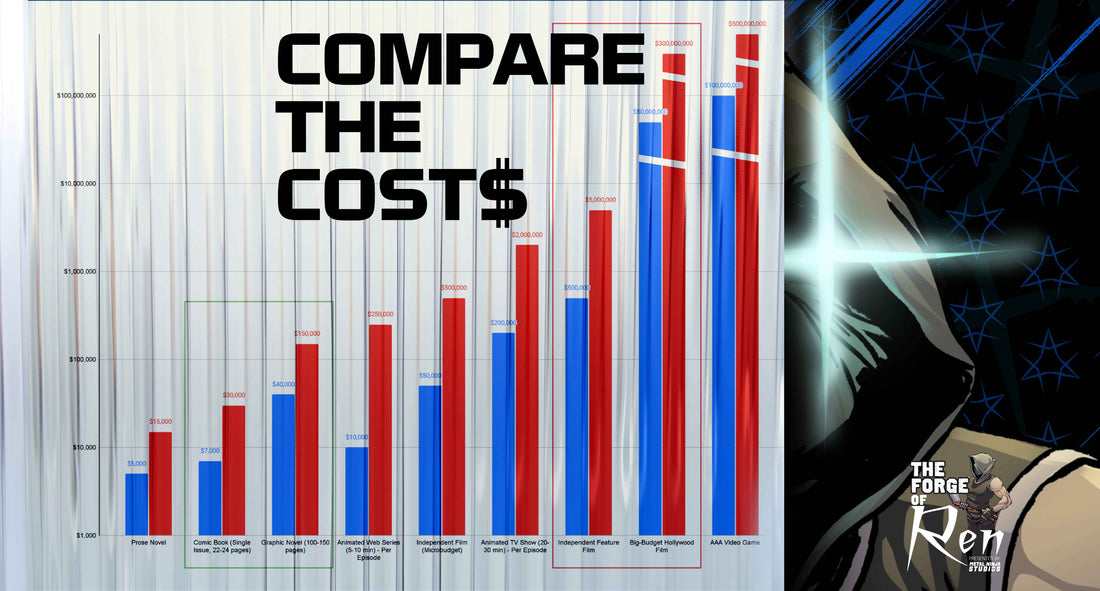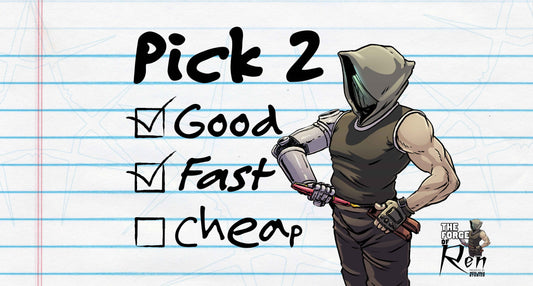Introduction
Bringing a story to life is a dream for many creators, but choosing the right medium can make all the difference in cost, effort, and accessibility. While comics, animation, and film are powerful visual storytelling formats, their production costs vary significantly. A well-planned comic book can be a cost-effective way to introduce a story to the world, while animation and film require larger teams, extensive resources, and a much bigger budget. Understanding these differences can help creators decide which path best suits their goals and financial realities.
In this article, we’ll break down the costs of comic book creation and compare them to the expenses of animation and film production. Whether you’re a writer exploring different storytelling mediums or a creator considering your next big project, this guide will help you make an informed decision.
The Cost of Creating a Comic Book
Comics are one of the most versatile and cost-effective ways to tell a story, but that doesn’t mean they come cheap. A well-made comic involves multiple professionals, each bringing unique skills. The core expenses of comic book production typically include writing, artwork (penciling, inking, and coloring), lettering, editing, and printing.
A single 20-page comic book can easily cost between $5,00 and $15,000+, depending on the quality of the creative team. Printing and distribution costs also factor in. Physical printing varies based on page count and print run. Still, digital platforms like Webtoon and ComiXology allow creators to distribute their work without worrying about print expenses. Crowdfunding has also become a vital tool for comic creators, helping to offset upfront costs through platforms like Kickstarter and Indiegogo.

Animation: A More Complex and Costly Process
While comics rely on static images and written dialogue to tell a story, animation introduces movement, sound, and voice acting, making it significantly more complex—and expensive. Creating an animated production involves several stages: storyboarding, character design, animation (2D or 3D), voice acting, and post-production.
For a basic cost estimate, animation pricing often falls into these ranges:
- 2D animation: $5,000 – $20,000 per minute
- 3D animation: $7,000 – $100,000 per minute
The costs depend on factors like animation style, frame rate, and production quality. A short animated sequence can cost as much as a full comic book issue, making animation a far less accessible medium for independent creators. Time is also crucial—while a comic can be produced in months, animation often takes years to complete, requiring large teams and complex workflows.
Film and Live-Action Production: The Highest Price Tag
Live-action filmmaking is the most resource-intensive medium of the three. Producing even a short film can quickly add up due to expenses such as screenwriting, casting, production crew, equipment rentals, CGI/VFX, post-production, and marketing.
For a clearer picture of film production costs:
- Independent films: $10,000 – $1M+
- Hollywood productions: $65M – $100M+ (for mid-tier films)
Beyond financial investment, filmmaking requires logistical planning—securing locations, hiring actors, and managing a full production team. Unlike comics, which can be created with a small dedicated team, filmmaking demands coordination across multiple departments. This makes it one of the hardest mediums for independent creators to break into without significant funding or studio backing.

When Animation or Film Might Be the Better Investment
While comics are an accessible and cost-effective way to tell a story, there are times when animation or film might be a better fit. Animation or film may be the more immersive choice if a story heavily relies on movement, music, or voice performances. Additionally, certain IPs perform better in cinematic formats, especially if there is a proven audience demand for action-packed storytelling.
However, these mediums require substantial financial backing to reach their full potential. Large budgets allow for higher production quality, but they also come with greater risks. For independent creators, starting with a comic book might be a more viable strategy before committing to an expensive animated or film adaptation.
Why Comics Are a Cost-Effective Visual Medium
Comics provide a more budget-friendly alternative for storytellers than film and animation. Comics require fewer resources, smaller teams, and shorter production timelines. They also allow creators to distribute their work through direct-to-consumer channels like Kickstarter, Webtoon, and online storefronts, cutting out traditional publishing barriers.
Additionally, comics offer full creative control. Unlike the film industry, where studios often interfere with a creator’s vision, independent comic creators can maintain ownership of their IP, shaping the story exactly how they want it. With lower upfront costs and more flexible distribution methods, comics provide a practical entry point into visual storytelling.
Comics as a Proof of Concept for Larger Productions
One of the most significant advantages of comics is their ability to serve as proof of concept for larger productions. Many successful films and TV series, including The Walking Dead, Scott Pilgrim, and Invincible, started as comics.
A well-received comic can demonstrate audience demand, strong storytelling, and compelling characters, making attracting investors and production studios easier. Instead of pitching an untested idea, creators can present a fully realized comic with an established fanbase, increasing the likelihood of adaptation into film, TV, or animation.
Successful comics boost licensing potential in addition to storytelling credibility. If a comic gains traction, it can lead to merchandising, adaptation rights, and long-term financial success, making it an appealing investment for creators looking to expand into other media.

The Metal Ninja Studios Advantage
Comics are a great investment, but they require careful planning and execution. Many creators struggle with budgeting, hiring artists, and managing the production pipeline. At Metal Ninja Studios, we specialize in smoothing the process, ensuring that your comic meets industry standards and is primed for success.
By hiring Metal Ninja Studios, you gain instant access to decades of cumulative experience in the industry. This ensures you avoid costly mistakes and save your most valuable resource—time. Our full-service comic book production team provides professional writing, illustration, lettering, and editing, helping you bring your story to life efficiently and professionally. With our experienced writers, artists, and production specialists, you can focus on storytelling while we handle the technical aspects, ensuring a polished and market-ready final product.
Conclusion
Every storytelling medium comes with its costs and challenges. While film and animation are powerful formats, their high price tags make them difficult for independent creators to pursue. Conversely, comics offer a flexible and cost-effective way to develop a story, test audience engagement, and even lay the groundwork for future adaptations.
Comics provide an excellent starting point for creators exploring visual storytelling. Whether as a standalone project or a stepping stone toward animation or film, a well-crafted comic book can be a powerful storytelling tool and a valuable investment in the long run.




